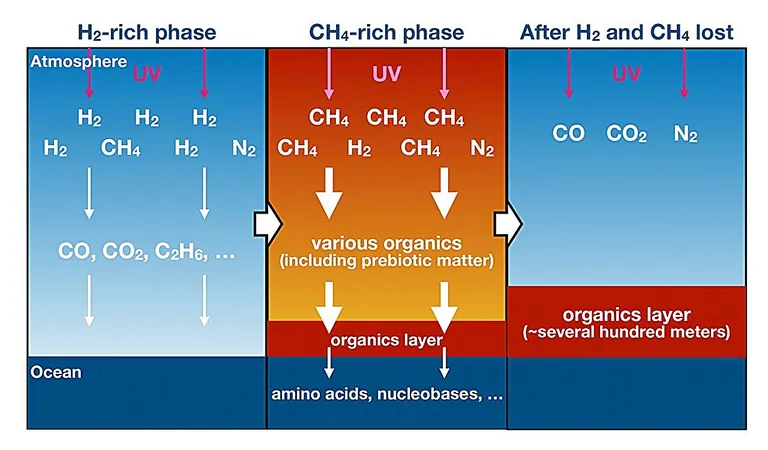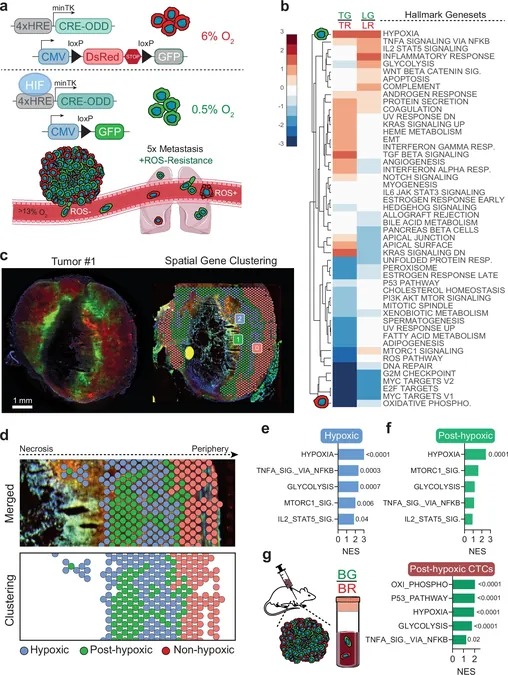
Did Life on Earth Emerge from an Ancient Organic-Rich Atmosphere? Groundbreaking Model Offers Surprising Insights!
2024-10-30
Author: Nur
Introduction
A revolutionary study by researchers from Tohoku University, the University of Tokyo, and Hokkaido University is challenging our understanding of how life began on Earth by unveiling a model that explores the ancient atmosphere's chemistry. Published in the journal *Astrobiology*, this research provides a crucial glimpse into the conditions that might have led to the birth of life on our planet.
Key Insights from the Study
According to Shungo Koyama from Tohoku University, "Ancient Earth was vastly different from the world we inhabit today. It was a barren, hostile landscape filled with metallic iron and an atmosphere rich in hydrogen and methane." These atmospheric components are key to unraveling the mystery of life’s origins as they play a significant role in the formation of organic compounds—often referred to as the 'building blocks of life.'
The Role of Solar UV Radiation
When ancient Earth was bombarded with solar ultraviolet (UV) radiation, these volatile molecules reacted chemically and produced organic materials, which are thought to be precursors to essential biomolecules like amino acids and nucleic acids. However, the process is complex and poorly understood due to the instability of such an atmosphere. Notably, UV radiation is known to break down water vapor, leading to the formation of oxidative molecules, but the exact mechanisms and timescales involved remain enigmatic.
Developing a New Photochemical Model
To tackle this challenge, the researchers developed a one-dimensional photochemical model that offers a clearer view of Earth’s primordial atmosphere. Their calculations indicated that a significant portion of hydrogen escaped into space, while hydrocarbons—such as acetylene, generated from methane—served to shield the surface from UV radiation. This shielding effect curtailed the breakdown of water vapor and the oxidation of methane, thereby promoting the production of organic compounds.
Implications for Life's Origins
Remarkably, the study proposes that if methane levels in ancient times matched the carbon levels found on present-day Earth, organic layers could have formed several hundred meters thick. "It’s plausible that this led to an enriched 'soup' of crucial building blocks, which could have been the cradle from which life first emerged on our planet," posits Tatsuya Yoshida of Tohoku University.
Comparisons with Other Planets
Intriguingly, the research findings suggest that the atmosphere of ancient Earth had striking similarities to the current conditions observed on our neighboring planets, Venus and Mars. Despite being relatively close in the solar system, these planets followed different evolutionary paths, resulting in the starkly contrasting environments we see today. This study not only sheds light on our own origins but could also inform the search for life on other planets, sparking curiosity about the potential for extraterrestrial life as we explore our cosmic neighborhood.
Conclusion
Stay tuned for more updates as scientists continue to unlock the secrets of life’s origins, and who knows? The next breakthrough might just be out of this world!


 Brasil (PT)
Brasil (PT)
 Canada (EN)
Canada (EN)
 Chile (ES)
Chile (ES)
 España (ES)
España (ES)
 France (FR)
France (FR)
 Hong Kong (EN)
Hong Kong (EN)
 Italia (IT)
Italia (IT)
 日本 (JA)
日本 (JA)
 Magyarország (HU)
Magyarország (HU)
 Norge (NO)
Norge (NO)
 Polska (PL)
Polska (PL)
 Schweiz (DE)
Schweiz (DE)
 Singapore (EN)
Singapore (EN)
 Sverige (SV)
Sverige (SV)
 Suomi (FI)
Suomi (FI)
 Türkiye (TR)
Türkiye (TR)